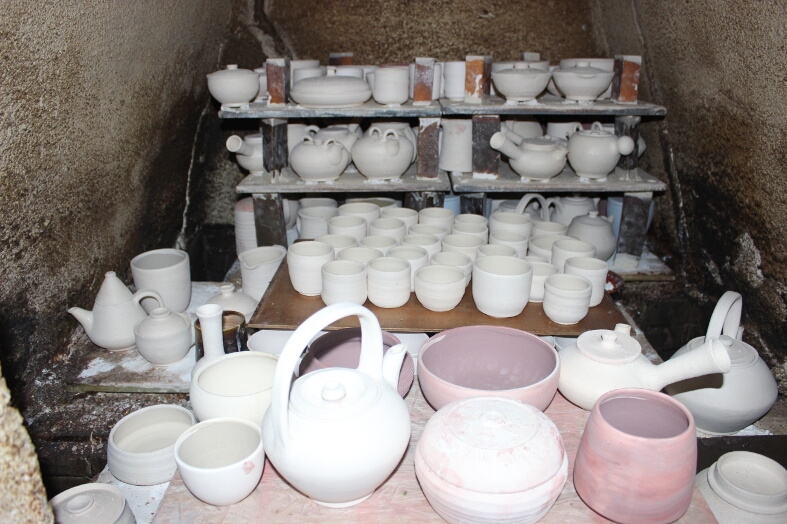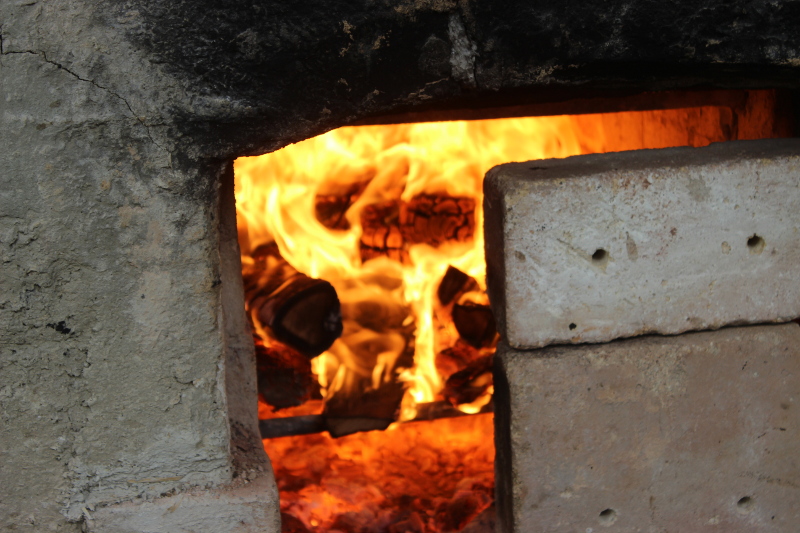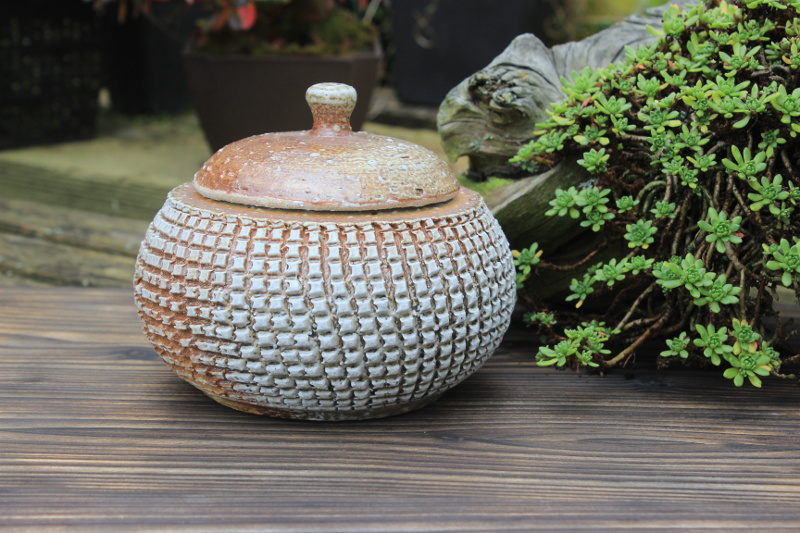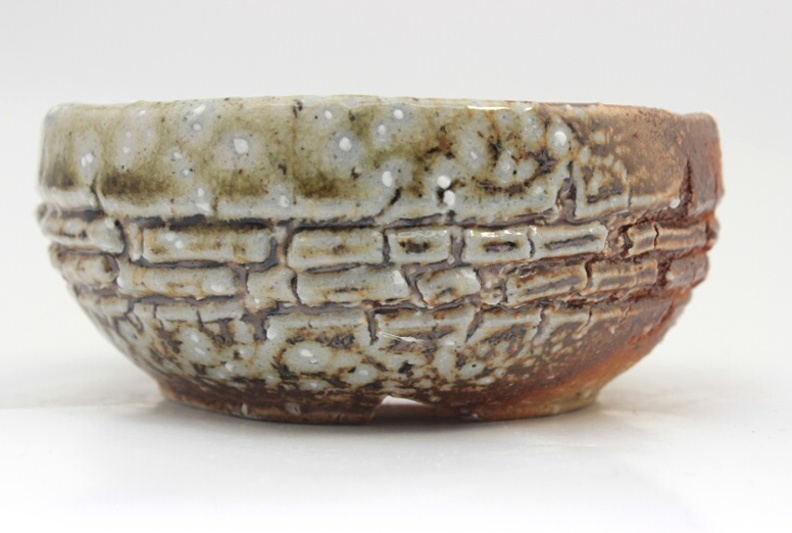Wood Firing
 Hardening/burning in a wood fire is the oldest way to create ceramics. Initially, firing was done oxidized (under oxygen atmosphere) in pitch fires. From approximately 300 a.c., so called slope kilns (Anagama, Noborigama) were developed in Asia (China, Korea, later in Japan) and firing was possible with the absence of oxygen (reduction firing). This type of kilns allowed temperatures of up to 1400°C, which was also sufficient for high fired porcelain.With wood fire typical temperatures of around 1300°C, most of the commercially available clay products vitrificate completely to stone ware (actually it is more difficult to find clays that do not loose shape at those temperatures). The wood ash is distributed in the kiln by the heat and melts at around 1250°C. This wood ash creates -in combination with the traces left by the flames- the characteristic surface of wood fired ceramics.
Hardening/burning in a wood fire is the oldest way to create ceramics. Initially, firing was done oxidized (under oxygen atmosphere) in pitch fires. From approximately 300 a.c., so called slope kilns (Anagama, Noborigama) were developed in Asia (China, Korea, later in Japan) and firing was possible with the absence of oxygen (reduction firing). This type of kilns allowed temperatures of up to 1400°C, which was also sufficient for high fired porcelain.With wood fire typical temperatures of around 1300°C, most of the commercially available clay products vitrificate completely to stone ware (actually it is more difficult to find clays that do not loose shape at those temperatures). The wood ash is distributed in the kiln by the heat and melts at around 1250°C. This wood ash creates -in combination with the traces left by the flames- the characteristic surface of wood fired ceramics.
The high temperatures in wood fired kilns simplify the formulation of plain but beautiful glazes, because at 1300°C many glaze ingredients already melt by themselves and no complex recipes are required. Adding ash, salt and soda increases the viscosity of the glazes even more. In the blog we show regularly results of glaze tests like Shino, Seladon, ferrous glazes (Temmoku, Oil Spot) and Flashing Slips.
I fire regularly two kilns, one kiln has about 600l and a Bourry box firing chamber, the other kiln can hold 1600l and has 3 normal firing chambers. Firing this kilns takes 12 hours, including the time to add salt and soda. After 3 days the kiln has cooled down and can be opened.

Here you can see some impressions of a wood firing.

Containers are the little sisters of tea pots, but have more degrees of freedom for decoration and shape.

Accent plants support a bonsai (Shitakusa) or stand alone (Kusamono).